Being healthy and fit isn’t a trend, it’s a lifestyle; and a good lifestyle is crucial not just for physical health but also mental wellness and quality of life1. Unfortunately, nowadays, maintaining a healthy lifestyle can be difficult due to changing way of living, increased expectations, and expenses. Achieving our goals with shortcuts can be stressful and it may lead to an invitation for various illnesses and disabilities.
Though various factors affect the quality of life, we can purposefully change our lifestyle & habits to live a more productive life. In this blog, we’ll share some tips for keeping a healthy lifestyle. Even these small changes in your lifestyle can impact your physical and mental health greatly.

‘The body thrives on movement. Keeping your body in movement can keep your bones and muscles strong. Regular exercise is one of the best and easiest ways to keep your lifestyle healthy. Regular exercise can help maintain weight, strengthen your bones and muscles, reduce the risk of getting diabetes, heart problems, and stroke1.
Current WHO and CDC guidelines recommend at least 150 minutes of moderate-intensity or 75 minutes of vigorous-intensity aerobic activity per week, along with 2 days of strength training. This can be broken into 30 minutes, 5 days/week2. Moreover, just taking some simple steps in your daily routine like using the stairs, walking for errands or using public transport, can add up to the physical activity required for achieving your health goals.
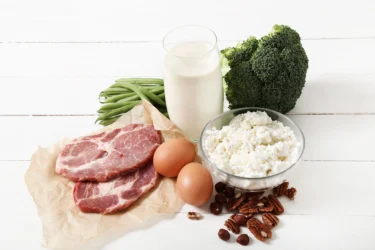
Apart from factors like genetics and environment, when it comes to lifestyle for good health, your diet plays a significant role. The habit of eating a balanced diet can help you maintain weight and keep good health. Your regular diet should include a balanced proportion of different fruits, green leafy vegetables, sprouts, pulses, whole grain, nuts, seeds and healthy oils. Your diet should be high in protein, fibres, vitamins, minerals, and low in meat, high-fat dairy, complex carbohydrates, sodium and highly processed foods3.
Also, eating mindfully is important. Play attention to what you eat and how you eat your food. You should chew your food about 20-30 times to make it digestible.

Research9 suggests that having breakfast daily can help to boost your metabolism and keep your system healthy. You should include more dietary fibres, vitamins, minerals, and less fat and carbohydrates in your breakfast. Eating the right food can keep you energised and fresh and avoid cravings for unhealthy snacking.

Water is the soul of our body and drinking the required amount of water is essential for every cell, tissue, and organ of our body. Drinking water is always a better option than drinking other beverages. It is advisable to keep a small water bottle with you and drink water at frequent intervals to stay hydrated. For adults, about 2–3 liters (8–12 cups) per day is often cited, but individualized hydration is key4.

Sleep is a crucial function of your body which helps to keep your body and mind stable. Sleep supports physical and mental health. It helps to restore the normal function of the body and recovers the nervous system.
It is recommended to sleep for 7-8 hours daily. Lack of sleep can lead to drowsiness, fatigue, loss of concentration, which directly affect your lifestyle. Chronic sleep deprivation can also lead to mood disorders (depression, anxiety), increased risk of obesity, diabetes, cardiovascular disease, lowered immunity. Severe sleep deprivation can impair brain function, leading to confusion, mood changes, and even psychotic symptoms5.
If you are having trouble getting sleep then read a book, listen to soft and calming music, try meditation, or seek medical attention.
Restricting salt (less than 5 g or one teaspoon per day) and sugar (less than 30 g per day for adults) intake is a very important step in maintaining a healthy lifestyle to reduce the chances of high blood pressure, heart disease, stroke, diabetes and multiple other health conditions.
Dr. Ashish Bajaj, M.B.B.S., M.D. in Clinical Pharmacology and Toxicology

Stress can be a major cause of physical and mental illnesses. Stress can be a major causative factor for heart disease, stroke, and high blood pressure. Live stress-free for a better life ahead. Try simple exercises, meditation, and yoga to relieve stress1.
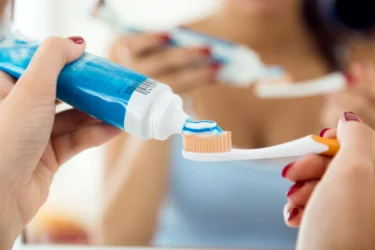
Small habits like brushing your teeth or taking a bath regularly can not only aid in maintaining good health but also have positive effects on your mood as well as improve your social life.
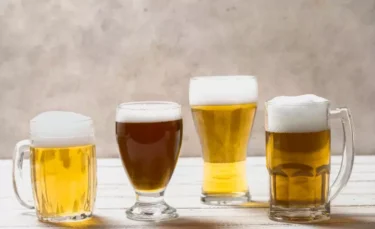
Alcohol is also a risk factor for some health issues, particularly those related to the liver. So, it is advised to consume in moderation. To be specific, women can drink 1 drink per day and men can have 2 drinks per day6. However, it’s important to note that no level of alcohol is considered completely “safe”. The safest choice for health is to avoid or minimize alcohol intake
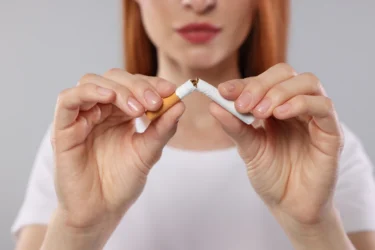
It is crucial to stop smoking as it affects your health adversely. Smoking has been related to heart diseases, lung problems and even some cancers7. Though some may find it difficult to quit smoking but it is not impossible. Consult a cessation specialist if you are unable to do this by yourself.
Yoga is best for good health. Yoga has been shown to have important psychological benefits, as the practice of yoga can help to increase alertness and positive feelings, and decrease negative feelings of aggressiveness, depression and anxiety.
Dr. M.G. Kartheeka, MBBS, MD(Pediatrics)

This is the easiest way to fill your life with positive vibes. Being around people who care for you and vice-versa brings laughter and joy. Laughter triggers the release of endorphins, which are hormones that elevate your mood and reduce stress, anxiety, and depression. Live, laugh & stay healthy!

Apart from managing your stress levels, taking care of your mental health is equally important as being physically fit. Mental health can affect your body and vice versa, making this one of the most vital healthy lifestyle tips. Mental well-being isn’t only about seeking help when problems arise; it’s also about proactively maintaining mental resilience8. A few things you can try:
Also Read: 12 Ways How Avocado (Butter Fruit) Can Benefit Your Overall Health And Skin
Living a healthy lifestyle is all about making smart, everyday choices. Eat well, stay active, get enough sleep, avoid smoking and alcohol and take care of your mental health. Start small, stay consistent, and enjoy the positive changes along the way!
Disclaimer: The information provided here is for educational/awareness purposes only and is not intended to be a substitute for medical treatment by a healthcare professional and should not be relied upon to diagnose or treat any medical condition. The reader should consult a registered medical practitioner to determine the appropriateness of the information and before consuming any medication. PharmEasy does not provide any guarantee or warranty (express or implied) regarding the accuracy, adequacy, completeness, legality, reliability or usefulness of the information; and disclaims any liability arising thereof.
Being a foodie is common among Indians and so are digestive issues. Indigestion, gas, bloating, hiccups, heartburn, stomach pain, ulcers, and nausea are some of the common features of digestive problems. These are the frequent problems arising from an unhealthy lifestyle, which includes binge eating, smoking, drinking alcohol, sleep disorders, eating junk, and stress.
The discomfort makes these problems hard to ignore, but it is also not convenient to visit the doctor or pharmacy so frequently for the recurring problems.
While some medical conditions may lead to digestive issues, some of the most common causes of digestive issues include lifestyle factors like stress, excessive dairy consumption, an inactive lifestyle, and inadequate fibre in the diet.
Gastrointestinal problems are commonly caused by:
Foods That May Cause Digestive Problems: Carbonated drinks, beans, artificial sweeteners, potatoes, pasta, eating or drinking too fast, using a straw, and swallowing excessively.
Diseases That May Cause Digestive Problems: Lactose allergy, gluten allergy, irritable bowel syndrome (IBS), Crohn’s disease, gastroesophageal reflux disease (GERD), and peptic ulcers.
Frequent episodes of digestive troubles can be attributed to various factors such as IBS, infection, neurological issues, or hormonal imbalances. Often, these symptoms are intertwined with signs of anxiety.
Dr. Arpit Verma, MBBS, MD (Pharmacology)
The symptoms of digestive problems are usually mild and short-lived and may not require medication; however, there are some simple home remedies that can help you reduce the symptoms. So, here are some home remedies that may relieve your digestive problems.

A lot can happen with a cup of tea. Although, targeting the root cause of your digestive problems is the best approach, if you need relief for minor stomach issues and temporary bouts of discomfort, then here is a warm cup of tea that may save your day.
You can prepare these teas by brewing one or more herbs commonly found in the kitchen, as listed below. You may also add honey to some of the teas.
Other ingredients, such as ajwain (carom seeds), caraway (shahi jeera), liquorice (mulethi), and holy basil (tulsi) can also be brewed along with ginger to help ease digestive issues like indigestion, gas, bloating, cramps and nausea.

Some other drinks that may relieve digestive issues include:
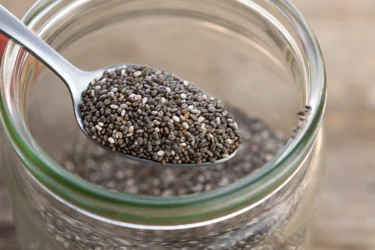
Mucilage is a slimy and slippery substance found in certain plants. The mucilaginous substance swells in water and is bland in taste. When consumed, it forms a protective layer over the inflamed lining or sore surface of the stomach that not only protects it from further damage by acid but also aids in its healing. Few examples are listed below:
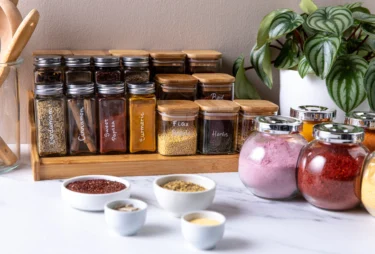
People with an upset stomach, gas, acidity, heartburn and other digestive troubles may also get relief by directly consuming powders of ingredients from the kitchen, such as fennel seeds, carrom, caraway, and coriander. Few examples are listed below:

In cases, where one cannot drink or do not feel like consuming anything, the following approach may benefit in relieving the symptoms of digestive trouble.
Also Read: Causes Behind Recurring Stomach Pain
Here are a few remedies you can try apart from the ones mentioned above:
If a person has recurrent gastritis, then along with using home remedies, they should definitely visit their physician who can give them a treatment regimen for the bacteria Helicobacter pylori (one of the causes of gastritis).
Dr. Nikhil Yadav, MBBS MD,CCEBDM
Also Read: Natural Home Remedies for Open Pores
As mentioned in the beginning, digestive issues are caused by a variety of dietary and lifestyle choices. The discomfort and pain of digestive problems may be mitigated by simply cutting out these harmful factors from your life. Limiting the intake of or quitting coffee, soft drinks, alcohol, tobacco, smoking, and excessive junk foods will go a long way towards curtailing the risk of stomach-related health conditions.
Healthy habits like eating regularly, avoiding binge eating, sleeping regularly, and getting some form of physical exercise daily can further lower your chances of developing a digestive problem in the long term. Stay away from foods that are hard to digest as well as acidic foods like lime and baking soda.
It should be noted that some people may experience digestive issues like GERD or other serious gastrointestinal conditions despite maintaining a healthy lifestyle. This may be unavoidable and the only solution is to seek professional medical treatment. The above-mentioned home remedies may provide relief from occasional bouts of gas and other symptoms of digestive troubles. However, if they fail to provide, relief then one must seek medical help immediately.
Also Read: Natural Home Remedies for Food Poisoning
Some common symptoms of GERD include heartburn, chest pain, difficulty swallowing, and regurgitation of food or sour liquid. It may also cause chronic cough, disrupt sleep, or worsen asthma if you have acidity at night-time.
One should seek immediate medical care if he or she experiences chest pain, shortness of breath or jaw or arm pain. If you experience severe or frequent GERD symptoms and take over-the-counter medications frequently or if home remedies are not working for you, you must consult a doctor.
Yes, smoking contributes to many common disorders of the digestive system, such as heartburn and GERD.
Disclaimer: The information provided here is for educational/awareness purposes only and is not intended to be a substitute for medical treatment by a healthcare professional and should not be relied upon to diagnose or treat any medical condition. The reader should consult a registered medical practitioner to determine the appropriateness of the information and before consuming any medication. PharmEasy does not provide any guarantee or warranty (express or implied) regarding the accuracy, adequacy, completeness, legality, reliability or usefulness of the information; and disclaims any liability arising thereof.
Acne, medically known as Acne vulgaris, is a common skin condition that typically appears on areas such as the face, neck, shoulders, chest, and back. It is especially prevalent during adolescence due to hormonal changes but may also persist into adulthood and in some cases occur during pregnancy.
Although acne is not a serious health threat, it can cause emotional distress and may lead to scarring if left unmanaged. If you are experiencing persistent or severe acne, it is advisable to consult a qualified healthcare professional for appropriate guidance and treatment options1.
Acne is a non-contagious, chronic inflammatory condition of the skin. It occurs when hair follicles become blocked with natural skin oil (sebum) and dead skin cells. This condition is commonly associated with hormonal fluctuations, particularly during adolescence1.
Acne can present in various forms, ranging from mild to more severe types. Individuals with oily skin are generally more susceptible to acne than those with dry skin. While acne primarily affects the skin, it may also have an impact on an individual’s self-esteem and overall quality of life.
For proper management and care, it is recommended to seek advice from a qualified healthcare professional.
There are two types of acne1:
Acne can develop due to a combination of internal and external factors. It typically begins when tiny pores on the skin become blocked with excess oil (sebum), dead skin cells, and environmental impurities. The following are some common contributing factors1:
Acne may present with a range of signs and symptoms, which can vary in severity and appearance. Common features include1:
In cases of mild acne, self-care practices may help in managing symptoms and promoting healthier skin. While treatment approaches can vary depending on the underlying cause, general care focuses on minimising excess oil, keeping the skin clean, and reducing the risk of pore blockage.
Here are some recommended self-care practices2:
Acne can be classified based on its severity and ranges from mild to moderate and severe. The choice of treatment depends on the type, intensity, and persistence of the condition, as well as individual skin characteristics.
Mild acne may often be managed with over-the-counter (OTC) preparations, available in the form of creams, gels, or ointments. These treatments can help to reduce excess oil, unclog pores, and control the growth of acne-related bacteria. However, it is important to follow usage instructions carefully and consult a healthcare provider if symptoms persist.
These preparations may sometimes cause mild side effects such as skin dryness, irritation, or a burning sensation, particularly at the start of treatment. It is recommended to begin with lower strengths and apply only as directed. Always perform a patch test and consult a pharmacist or healthcare professional before starting any new treatment.
If acne becomes difficult to manage with self-care or over-the-counter products, it is advisable to seek guidance from a qualified dermatologist. Moderate to severe forms of acne, particularly those that are inflamed, painful, or leaving scars, often require medical treatment tailored to the individual’s needs.
Dermatologists may consider a range of treatment options depending on the nature and severity of the condition2:
Homemade face masks, using commonly available natural ingredients, are sometimes used to soothe the skin. Examples may include:
Turmeric is valued for its anti-inflammatory, antiseptic, and antioxidant properties. To prepare, mix half a cup of chickpea flour with two teaspoons of turmeric powder and a small amount of ghee or almond oil. Add enough water to make a smooth paste. Apply the mixture to the skin for five minutes before rinsing with cold water. While turmeric is popularly used in skincare, results may vary3.
Cucumber has a soothing effect on the skin that may help reduce skin inflammation and irritation. Blend one small cucumber with one cup of oatmeal to form a paste. Apply to the affected area for approximately 30 minutes before rinsing4.
Honey is known for its antibacterial properties and has traditionally been used to support skin healing. Apply a thin layer of honey to the face for 30 minutes, then rinse with lukewarm water5.
Yogurt contains probiotics which may inhibit bacterial growth on the skin. Combine one teaspoon of yeast with plain yogurt to make a mask. Apply for 15 to 20 minutes before rinsing with cold water6.
Egg whites contain lysozyme, a natural enzyme believed to have antibacterial and astringent properties. These may help remove excess oil and impurities from the skin. Apply egg white to the face, allowing it to dry, then rinse off. This mask may also help soothe inflammation7.
Bananas are known for their gentle exfoliating effects, helping to remove dead skin cells and excess oil. Lemon may help in drying out residual oil and has antibacterial qualities. Mash a banana and mix with lemon juice to create a paste. Apply to the skin, then rinse after suitable time8.
Also Read: Best Home Remedies For Lipoma
Acne is a common yet manageable skin condition that can affect individuals at various stages of life. With proper care, lifestyle adjustments, and timely medical guidance, its impact can be minimised. For persistent or severe cases, consulting a qualified dermatologist is strongly recommended for safe and effective treatment.
Disclaimer: The information provided here is for educational/awareness purposes only and is not intended to be a substitute for medical treatment by a healthcare professional and should not be relied upon to diagnose or treat any medical condition. The reader should consult a registered medical practitioner to determine the appropriateness of the information and before consuming any medication. PharmEasy does not provide any guarantee or warranty (express or implied) regarding the accuracy, adequacy, completeness, legality, reliability or usefulness of the information; and disclaims any liability arising thereof.
Skin is often an unsung hero among the body’s organs. It is also one of the first to reflect internal imbalances. Nourishing the body with essential nutrients, such as antioxidants, healthy fats, water, vitamins, and other micronutrients, may help support the overall appearance and condition of the skin.
Since the process of skin ageing may begin internally, focusing on a nutrient rich diet is an important step. While a balanced diet is a key factor that may help support skin health over time, other aspects such as sun protection and a regular skincare routine also play a valuable role. Foods that are rich in vitamins and minerals may contribute to maintaining the skin’s natural vitality.
Nutrient dense foods often contain compounds like various vitamins, ellagic acid, and components that may support natural collagen levels. Collagen is present in the middle layer of the skin and plays a role in maintaining its fullness and firmness. With age, natural collagen levels may decline. However, incorporating certain foods into the diet may be beneficial in supporting skin radiance and overall glow. In particular, foods rich in vitamin C may have a positive effect on the visible signs associated with skin ageing.
Here are some foods that may be beneficial for supporting healthy looking skin and overall well-being as you age.
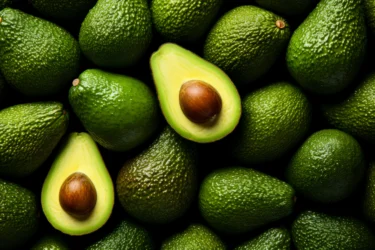
Avocados are a flavourful fruit that may provide a range of nutrients. They are a source of monounsaturated and polyunsaturated fats, which may help to nourish the skin and support moisture balance. These healthy fats may also demonstrate properties that support the body’s natural defences.
Avocados contain compounds such as lutein and zeaxanthin, which, according to some studies, may help to support the skin’s ability to cope with environmental stressors such as UV exposure. They also contain several vitamins, including A, B, C, E, and K, which may contribute to maintaining skin health and promoting a natural glow1. You can add avocados to salads or make healthy pudding with it.
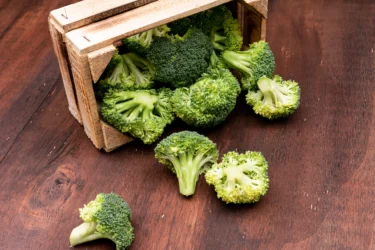
Broccoli is a nutrient-rich vegetable that may offer valuable properties for overall health. It contains a variety of compounds that may have anti-inflammatory effects and may support the body as it ages. Broccoli is a good source of vitamin C and vitamin K, both of which may help maintain skin health.
Vitamin C plays a role in the body’s natural production of collagen, which is an important component of the skin’s structure. Consuming broccoli raw or lightly steamed may help retain its nutritional value. It can be included in salads, soups, or enjoyed as a side dish. Additionally, broccoli is high in fibre and provides a source of calcium2.
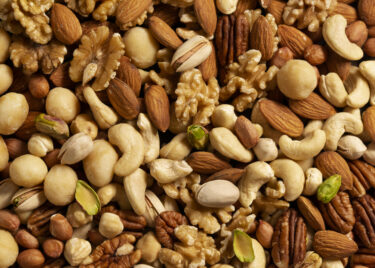
Nuts are a rich source of nutrients, including protein, vitamin E, essential oils, minerals, and antioxidants. Almonds and walnuts, in particular, contain vitamin E, which may help support the skin’s natural defences against environmental stressors such as UV exposure3. Vitamin E also helps to strengthen the skin and give a glow. You can sprinkle some nuts over salads or stir them into the soup for a little crunch.
Walnuts have the highest antioxidant content of any nut and are high in omega-3 fats. This combination may demonstrate properties that support general well-being. Additionally, walnuts may be beneficial for digestive health. Since the condition of the skin is closely associated with the balance of the gut microbiome, maintaining digestive health may help the skin function optimally, including in areas such as moisture balance and protection.
Including blueberries in your diet may be an enjoyable and simple way to support overall health. These small fruits are rich in antioxidants, particularly bioflavonoids, which may help to support the body’s natural functions. Some studies suggest that these compounds may assist in maintaining healthy circulation and may also contribute to skin health10.
Dr. Siddharth Gupta, B.A.M.S, M.D (Ayu)
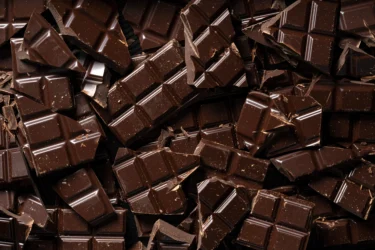
Dark chocolate, when consumed in moderation, may offer antioxidant properties that support skin health. Cocoa flavanols found in dark chocolate may help protect the skin from environmental stressors and support blood flow, which may help in skin nourishment and moisture.
Dark chocolate with at least 70% cocoa also contains magnesium, which may help with stress and sleep, which are factors that can influence the skin’s appearance. Be mindful of added sugars, as excessive sugar intake may affect skin quality4.
Citrus fruits such as oranges, grapefruits, lemons, and limes are rich in antioxidants and may be excellent choices when it comes to foods rich in vitamin C, which may contribute to reducing the visible signs of ageing.
Dr. Rajeev Singh, BAMS
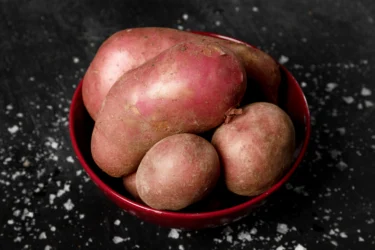
Sweet potatoes are a nutrient rich food that may benefit skin health. They are high in vitamin A, which plays a role in supporting collagen health and may help maintain skin appearance. Consuming sweet potatoes and other vitamin A rich foods may contribute to a healthy, radiant glow5.
To enjoy sweet potatoes, you can roast them with some extra virgin olive oil, salt, and pepper for a delicious and nutritious meal.
Tea and coffee might offer potential benefits for skin health. Studies12 suggest that polyphenols found in coffee and green tea may help manage photoaging (skin ageing due to sun exposure) and hyperpigmentation (darkening of the skin). However, it’s important to monitor your caffeine intake and consider your individual tolerance.
Dr. Smita Barode, B.A.M.S, M.S.
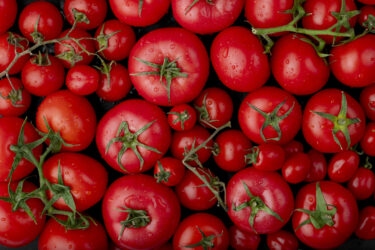
Tomato and tomato juice are rich in lycopene, a natural carotenoid that may help protect the skin from sun exposure. Cooked or processed tomatoes may offer more lycopene than raw ones, potentially enhancing their effects6.
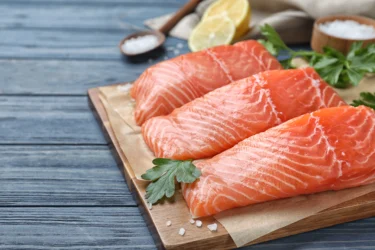
Fatty fishes such as salmon, mackerel, and tuna are rich in omega 3 fatty acids, which may support glowing skin by helping to maintain moisture levels and reduce skin inflammation. These fish are also a good source of vitamin E and zinc, which may support skin healing and help to soothe irritation.
.Foods rich in vitamin A may support skin health and contribute to maintaining the skin’s structure. Vitamin A is found in foods such as egg yolks, carrots, pumpkin, liver, and fortified cereals, which may help maintain a youthful appearance and promote healthy skin11.
Dr. Anuja Bodhare, B.A.M.S, M.D (Ayu)

Pomegranate is considered a nutritious fruit that may offer anti-ageing properties. It may contribute to a more radiant complexion and promote overall skin health8. Incorporating pomegranate into your diet may support your well-being.
It’s also important to remember that factors like sleep, exercise, and sunscreen play a significant role in maintaining healthy skin, in addition to a balanced diet.
Also Read: 12 Proven Health Benefits Of Makhana (Fox Nuts)
This is because excessive salt intake may cause cells to lose water, which can contribute to dehydration. Inadequate hydration may affect skin appearance and is often associated with signs of ageing.
Also Read: Best Dry Fruits That Can Speed Up Your Weight Loss
Along with a healthy diet and lifestyle, it is important to follow a healthy skincare routine. Cleanser, Moisturiser, and sunscreen are important steps in skincare. You may also find it beneficial to add anti-aging serums to your skincare routine after consulting with a doctor.
Also Read: What To Eat & Avoid During Malaria?
The foods that we consume may influence the skin’s health, appearance, and how it changes with age. Diets that include foods rich in protein, healthy fats, and antioxidants may support overall skin well-being. Alongside a balanced diet that includes a variety of whole, plant-based foods, it is also helpful to adopt other supportive habits, such as wearing sunscreen, avoiding smoking, staying physically active, and using appropriate skincare products to promote healthy skin.
Disclaimer: The information provided here is for educational/awareness purposes only and is not intended to be a substitute for medical treatment by a healthcare professional and should not be relied upon to diagnose or treat any medical condition. The reader should consult a registered medical practitioner to determine the appropriateness of the information and before consuming any medication. PharmEasy does not provide any guarantee or warranty (express or implied) regarding the accuracy, adequacy, completeness, legality, reliability or usefulness of the information; and disclaims any liability arising thereof.
Diabetes is a metabolic disorder that affects the manner in which the body processes blood sugar. It is a chronic disease and cannot be cured. Our genes contribute a lot towards our susceptibility to suffering from diabetes but so does our lifestyle. Unhealthy food habits coupled with a sedentary routine can increase the odds of suffering from this disease.
While anyone can get it irrespective of gender, age or social strata, the number of men suffering is high1. One has to seek immediate medical treatment for this disease as a delay in getting medical help might adversely affect your heart, eyes, blood vessels, nerves and kidneys. There are many early warning signs and symptoms of diabetes in men. In any case, consult a doctor and never take medicines on your own, as it might lead to severe complications.

Since the level of blood sugar is high, it extracts fluids from the cells making the patient feel excessively thirsty. People suffering from diabetes feel hungry frequently because of the body’s inability to efficiently utilize blood sugar to be converted to energy. If you find yourself drinking gallons of water or gorging on food suddenly, talk to your doctor2.

People who suffer from diabetes start using the washroom frequently. Excessive thirst leads to frequent urination. Most men suffer from broken sleep at night. Older patients may even experience bed-wetting. The body tries to expel the extra glucose in the blood through urine. That is another reason for frequent urination2.

If you have generally been feeling low-key and suffering from tiredness and lethargy without any obvious reasons, you may have diabetes. Unexplained fatigue and listlessness are due to inefficient usage of energy. A glucose test will provide you with clarity so get one done immediately3.
Read More: 10 Foods to Fight Fatigue
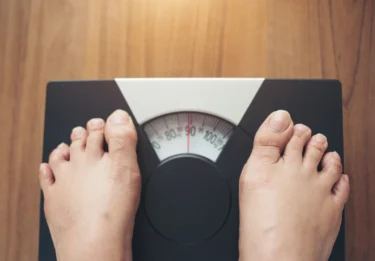
Men suffering from diabetes often present with unintentional weight loss. The body is unable to use blood sugar to transform it into energy. This leads to sudden weight loss. If you have lost weight without any reason, please consult your doctor2.

Due to high sugar levels in the blood, men suffering from diabetes fall prey to skin infections very often. This could be genital itching or even thrush. The high sugar proves to be a perfect breeding ground for fungus which causes these infections4.
Adding to the symptoms mentioned in the blog burning pain in the legs and feet are also a symptom of diabetes. Regular blood sugar screening is recommended if you are experiencing any of the above.
Dr. M.G. Kartheeka, MBBS, MD(Pediatric)

Men suffering from undiagnosed diabetes may experience blurred vision and rarely loss of eyesight. The high glucose levels in the body are harmful for most organs ,at times the eyes are the first to suffer. Seek treatment immediately if you have a sudden dip in your eyesight2.

Men who suffer from diabetes find that their cuts and wounds take longer to heal. High blood sugar reduces immunity and affects the body’s ability to heal itself. Since the situation can exacerbate gangrene and even can lead to amputation, if you have a wound that is not healing, seek expert medical guidance5.

Men suffering from diabetes experience erectile dysfunction. There are several mechanisms responsible for such kind of Erectile Dysfunction in diabetes. To name a few, impaired function of nerves, hindrance with the blood flow and psychological issues associated with diabetes are the common ones. It is important to be aware of false advertisements of many supplements and medicines that claim to cure ED. One must avoid self-medicating and always consult a doctor beforehand6.
Diabetes especially type 2 is commonly related to erectile dysfunction as high blood sugar over long periods of time can damage nerves and blood vessels causing problems with getting or keeping an erection firm enough.
Dr. Ashish Bajaj, MBBS, MD in Clinical Pharmacology and Toxicology
Want to manage your diabetes effectively? Book your free diabetes consultation from our experts!
Many factors contribute to or increase your chances for diabetes and its related complications, some of them include:
Quitting or reducing daily smoking, engaging in some amount of daily physical activity, maintaining a well-balanced diet and keeping a check on your weight are good measures to reduce the risk of diabetes. Keeping a constant check at intervals on your blood glucose level also helps.
If you have a family history of diabetes and already have been diagnosed with borderline diabetes, certain changes in lifestyle can benefit your physical and mental well-being while also keeping your diabetes in check. Balancing your meals by putting in enough protein, vitamins and leafy vegetables will improve your bodily health. An even mixture of starch, fruits, vegetables, healthy fats and protein comprises a good, balanced and well-made meal.
Avoiding excess sugar, like carbonated drinks, fizzy sugary juices, sodas, candies and sweets is the key to keeping your diabetes level low. You can indulge in one or two sugary treats once in a while, however, consuming them in moderation is important.
Also Read: Diabetes: The Silent Killer Sweeping Across India
Disclaimer: The information provided here is for educational/awareness purposes only and is not intended to be a substitute for medical treatment by a healthcare professional and should not be relied upon to diagnose or treat any medical condition. The reader should consult a registered medical practitioner to determine the appropriateness of the information and before consuming any medication. PharmEasy does not provide any guarantee or warranty (express or implied) regarding the accuracy, adequacy, completeness, legality, reliability or usefulness of the information; and disclaims any liability arising thereof.
Links and product recommendations in the information provided here are advertisements of third-party products available on the website. PharmEasy does not make any representation on the accuracy or suitability of such products/services. Advertisements do not influence the editorial decisions or content. The information in this blog is subject to change without notice. The authors and administrators reserve the right to modify, add, or remove content without notification. It is your responsibility to review this
When we are born, the very first thing we do is breathe! Breathing, comprising of inspiration (inhale) and expiration (exhale), feeds oxygen to every cell in the body and expels out waste carbon dioxide. And it is your lungs that are mainly responsible for this exchange of air, crucial for life. However, despite being a crucial body part, we don’t really work on keeping our lungs healthy unless we experience breathing problems.
As we age, the amount of air our lungs can hold, known as the lung capacity, decreases. Smoking, pollution, and other health problems such as asthma or chronic obstructive pulmonary disease (COPD) can also affect this and lead to breathing difficulties. Thus, it’s important to take care of your lungs from the beginning to help them function well.
In this blog, we will discuss some basic exercises that you can incorporate in your daily routine to improve your lung health.
Before we move onto the exercises, let’s look at the mechanics of breathing.
The diaphragm is a group of muscles attached to the bottom of your lungs and is the main apparatus that controls breathing. When it contracts (along with other muscles in your lungs and ribs), it moves down and creates space for fresh air(oxygen) to enter the lungs through the airways. Air exchange takes place within the air sacs (alveoli) of the lungs. As the diaphragm relaxes, it forces the used air (carbon dioxide) to be expelled out from lungs. Then this fresh air circulates through the body1.
Diaphragmatic breathing is supposed to be primary way of breathing, but many of us develop a habit of using neck and back muscles, which can limit the amount of air that enters and leaves our lungs.
Though a person is unable to control the amount of oxygen their lung can hold, lung exercises provide ways to help your lungs become more efficient at managing airflow and oxygen levels. Here’s how these can benefit your lungs2,3:
Now let’s have a look at some basic exercises that can help improve your lung health along with its functional capacity.

Pursed-lip breathing exercise is easy and can be done anywhere at any time. Steps to follow for pursed-lip breathing:
This exercise keeps your airway open for longer, which facilitates the airflow into and out of the lungs. These make it easier for the lungs to function and improve the exchange of oxygen and carbon dioxide4,5.This exercise can be beneficial for people who are less physically active and are not using their breathing muscles frequently.

Diaphragmatic breathing is one of the best exercises that use the diaphragm muscles for breathing. It is also known as belly breathing as the stomach rises and falls with each breath. Follow these steps to practice diaphragmatic breathing:
Diaphragm breathing helps strengthen the respiratory muscles and improves lung capacity6.

Stretching the ribs causes chest expansion that helps improve the tone of respiratory muscles and activity and enhances lung function7.

This exercise gives space to your diaphragm to expand and provides strength to the chest muscles.

Any activity that works the abdominal muscles also works the lungs. Studies8 have shown that even simple humming can help improve your respiratory health. It helps enhance sinus ventilation and increases production of nitrous oxide gas in the nose which aids in fighting inflammation. Singing can also help improve lung function by increasing your lung capacity. It forces used air out of the lungs so more fresh air can enter9. Moreover, these are great stressbusters!

There are certain yoga poses that are beneficial for lung health and Simhasana is one. It is a unique pose that requires you to make a sound. The sound created during Simhasana resembles the roaring sound of a lion. To do this:
Yoga poses such as simhasana are found to improve lung capacity and have positive effects on lung function10.
While lung exercises are usually good for your health, if you have a chronic lung disease, always consult your doctor before starting an exercise regime.
Pranayama or breath regulation, another important breathing exercise, can enhance the efficiency of healthy individuals and athletes by enhancing the ventilatory functions of the lungs, especially for those who partake in aerobic-based sports and require efficient lungs to deliver sufficient oxygen uptake.
Dr. M.G. Kartheeka, MBBS, MD(Pediatrics)
Besides their benefits for lung health, these exercises also have a positive impact on several body functions. These are11:
Incorporating the right exercises into your routine can significantly boost your lung health, enhancing your breathing capacity, stamina, and overall well-being. But remember, you have to practice these exercises regularly for best results. Also, everybody’s threshold is different and it’s necessary to listen to your body if you feel any discomfort. Consult a doctor if you already have lung problems before incorporating any exercises in your routine.
Disclaimer: The information provided here is for educational/awareness purposes only and is not intended to be a substitute for medical treatment by a healthcare professional and should not be relied upon to diagnose or treat any medical condition. The reader should consult a registered medical practitioner to determine the appropriateness of the information and before consuming any medication. PharmEasy does not provide any guarantee or warranty (express or implied) regarding the accuracy, adequacy, completeness, legality, reliability or usefulness of the information; and disclaims any liability arising thereof.
Did you know that 15 out of 1000 women and 1 in 1000 men experience thyroid problems?1 While it’s important to monitor your diet if you have a thyroid condition, paying attention to lifestyle factors is just as crucial.
The thyroid gland plays a key role in managing the metabolic function of the body. When the thyroid does not function properly, it can affect the entire body. Individuals with thyroid issues may experience symptoms such as depression, weight gain, fatigue, low body temperature, hair fall, sensitivity to light, and reduced stamina. It’s important to understand how to manage thyroid conditions properly, including the key dos and don’ts.
Thyroid disorders affect approximately 1-10% of the adult general population, with women being 8 to 9 times more likely to be affected than men2,3.
Before we dive into the dos and don’ts of thyroid care, it is important to recognise the signs of thyroid problems. There are two main types of thyroid conditions: hyperthyroidism, which occurs when the thyroid is overactive, and hypothyroidism, which occurs when the thyroid is underactive.
If you have hyperthyroid issues, you may experience any of the following symptoms:
If you have hypothyroid issues, you may experience any of the following symptoms:
If you notice one or more of these symptoms, you should speak with a doctor immediately and request a blood test. Apart from confirming a diagnosis, your doctor will guide you with a list of dietary dos and don’ts for thyroid issues (some of which we’ve listed below). Note that, while dietary precautions are important for thyroid patients, it’s even more crucial to take the prescribed medication in the correct dosage.
Thyroid hormones control the basal metabolic rate in the body, hence the weight loss or gain in thyroid diseases. Regular thyroid profile testing and adjustment of dose by an endocrinologist is of paramount importance.
Dr. M.G. Kartheeka, MBBS, MD(Pediatrics)
It is important to check thyroid levels regularly, measuring TSH, T3, T4, and sometimes free T3 and T4 levels. Whether you get it done from the convenience of your home or visit a laboratory, it is up to you. If you have symptoms of a thyroid disorder, it is important to have a frank discussion with your doctor regarding your symptoms and get a physical examination done to seek clarity on the exact cause of your symptoms7.
Individuals with thyroid issues may be recommended to drink distilled water as chlorine, fluoride and bromine levels are low in distilled water and it is iodine-free, which helps the thyroid to function properly. Distilled water may also be helpful in cleaning the liver and kidneys of toxins.
Individuals with thyroid issues must have foods with vitamin B such as crabs, shellfish, and brazil nuts as these foods contain selenium, a mineral that is needed for optimal thyroid function. Tyrosine is necessary for the production of thyroid hormones. Tyrosine-based foods, such as almonds, sesame seeds, and oats may help reduce inflammation and help enhance health. Antioxidant-rich foods like fresh vegetables and fruits may also help reduce inflammation and support overall thyroid health8,9.
Smoking and drinking alcohol should be avoided in individuals with thyroid disorders. Alcohol can suppress thyroid gland function, while tobacco or smoking may interfere with iodine uptake and disrupt normal thyroid hormone synthesis. Smoking is also associated with an increased risk of Graves’ disease (hyperthyroidism) and may worsen thyroid eye disease10,11.
Caffeine is a stimulant that can temporarily increase the heart rate and blood pressure. Sugar also has detrimental effects on the body. Caffeine has antioxidant properties, so consuming it in small amounts may have an anti-inflammatory effect. However, consuming more than the recommended amount of caffeine can alter the TSH levels produced by the pituitary gland.
Many individuals with thyroid conditions may find it difficult to understand the changes happening in their body and often turn to the internet for answers. However, online sources can vary in accuracy and may lead to confusion or unnecessary concern.
It’s helpful to be aware of the common symptoms and conditions linked to thyroid issues. However, it’s important to consult a qualified doctor for an accurate diagnosis and appropriate medical guidance before starting any treatment or management plan.
By understanding the signs of thyroid problems and following the right medical advice, you can take control of your health and manage symptoms effectively. A balanced approach involving regular check-ups, the right medications, and healthy lifestyle habits is key to supporting thyroid function.
Also Read: Effective Care and Natural Masks for Acne
Disclaimer: The information provided here is for educational/awareness purposes only and is not intended to be a substitute for medical treatment by a healthcare professional and should not be relied upon to diagnose or treat any medical condition. The reader should consult a registered medical practitioner to determine the appropriateness of the information and before consuming any medication. PharmEasy does not provide any guarantee or warranty (express or implied) regarding the accuracy, adequacy, completeness, legality, reliability or usefulness of the information; and disclaims any liability arising thereof.
Winter is coming!
A cosy room, warm blankets, a cup of hot chocolate, and some pleasant music is the perfect way to enjoy this season. But winter can quickly lose its charm if you’re struggling with a cough or cold.
Cough and cold can be frustrating and debilitating, especially when coughing fits are hard to control. It is normal to clear your throat when something feels stuck, but if the irritation is severe, it may develop into a lingering cough. During winter, a weakened immune system can also make you vulnerable to infections.
Coughing is your body’s natural way of clearing your throat and airways of mucus, irritants, and blockages, such as when food accidentally goes down the wrong way. Cough is usually classified as acute or chronic based on how long it lasts12. Acute cough lasts for less than three weeks, and chronic cough lasts for more than eight weeks.
Cough can be ongoing or short-term based on the underlying cause of cough. The causes of cough range from temporary infections to long-term conditions. Some of the most common causes of cough include12:
Coughs can vary depending on their underlying cause, but are commonly classified as:
If you have a wet cough, you don’t want to suppress it as the infected mucus should drain out, but you want to ease your dry cough because it is exhausting. Here, we have listed some common foods, herbs or home remedies that will help you get relief from the dry and wet cough.

Tulsi (Holy Basil) is traditionally used to ease coughs due to its soothing, anti-inflammatory, and antimicrobial properties13. It may help loosen mucus, making it easier to expel, and can calm throat irritation. Tulsi is often consumed as a tea or in herbal remedies to support respiratory health.
In my opinion, Tulsi is the super herb in Ayurveda. When you catch a cough or a cold, guess who might come to the rescue? That’s right, Tulsi! This herb may act like the superhero of the Ayurvedic universe, fighting off germs and boosting your immune system like a champ13.
Dr. Siddharth Gupta, B.A.M.S, M.D (Ayu)
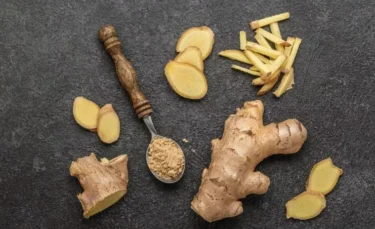
Ginger is a popular home remedy for cough and acts as an anti-inflammatory1. A cup of hot ginger tea can ease your annoying cough and sore throat. Ginger contains certain compounds that dilate the blood vessels of the lungs and relax and smoothen the muscles that lead to the opening of the airways. You can slice up fresh ginger or freshly grated ginger in hot tea for relief from cough.
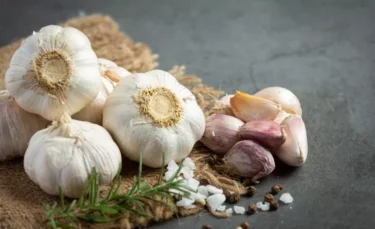
Garlic can help you fight cold and flu2. It ensures faster recovery and has other health benefits as well3. You can have garlic raw or add it to your chicken or vegetable soup, dal, or broth. Garlic is rich in compounds that boost immunity, has medicinal properties, and can be a part of your daily diet.
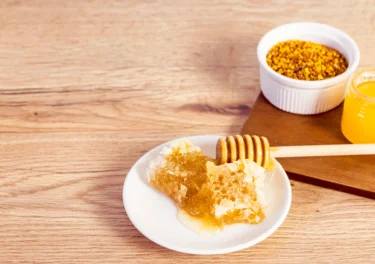
Raw honey is versatile in its healing properties, particularly in respiratory ailments. It possesses antibacterial, antiviral, antifungal, and anti-inflammatory properties that may help reduce the intensity and duration of a cough4. For better results, make tea with two tablespoons of honey and two tablespoons of fresh lemon juice with adequate water. Lemon works as a natural antioxidant and can help revitalise your energy levels. Do check with your doctor if you have diabetes.
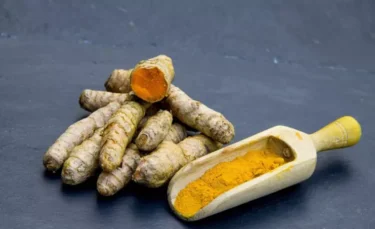
Turmeric milk is a popular home remedy in India, used for a myriad of ailments. It is a potent home remedy that can be helpful for sore throat and cough5. Turmeric is highly beneficial due to its active compound, curcumin, which gives the spice its yellow colour and provides anti-inflammatory properties. Curcumin helps boost the immune system and enhances the body’s antibody response to infections. Add some black pepper to the turmeric to improve the absorption of curcumin.
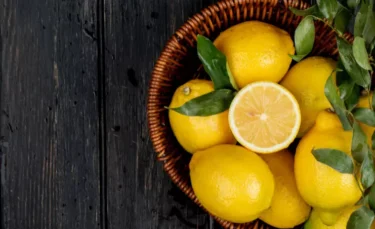
Packed with vitamin C and antioxidants, lemon is great for boosting your immunity. It helps to boost immunity and is also essential for DNA repair and serotonin production. Freshly squeezed lemon juice with warm water or tea can help you soothe your sore throat and cough6. If you have cold, cough or flu, eating oranges may help you recover faster, as they are rich in vitamin C and support the immune system.
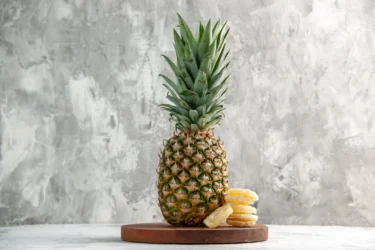
It may come as a surprise, but pineapple can be a powerful natural aid for cough. Bromelain, an enzyme found in pineapple, has anti-inflammatory and mucolytic (breakdown of mucus) properties8. These two characteristics of bromelain make pineapple an excellent food to help relieve your cough.
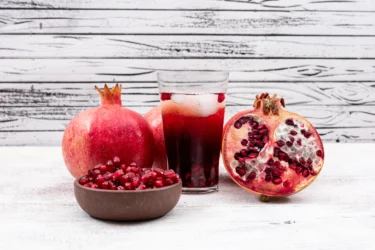
Fresh pomegranate juice is rich in antibacterial and anti-inflammatory compounds. It contains flavonoid antioxidants that may help fight viruses and potentially shorten the length of a cold by up to 40%7. You can drink fresh pomegranate juice daily or add it in smoothies or herbal tea.
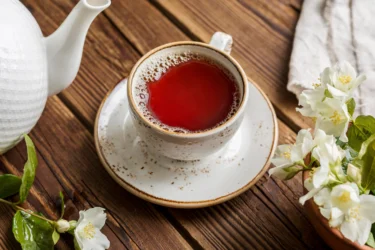
Hot tea (green, black, and regular) is one of the best remedies during a cough or cold. Rich in antioxidants, tea can help soothe your sore throat and loosen mucus, thus helping clear your nasal congestion. Chamomile tea is another helpful option, as it has antibacterial and anti-inflammatory properties. It also promotes better sleep and supports your immune system.
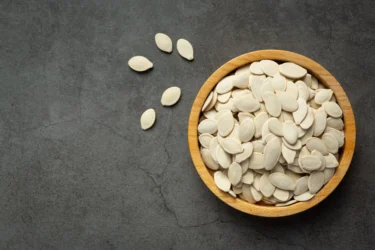
Pumpkin seeds are rich in zinc, a mineral that your body requires to support the function of white blood cells, which play a key role in fighting off pathogens like the flu virus. You can enjoy them as a snack or add them as a topping to your salad for that extra flavour and crunch.
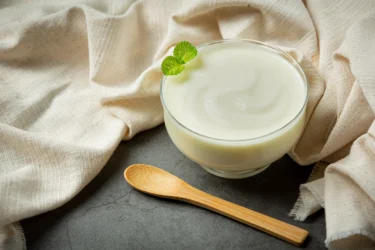
Probiotics may help support your body’s natural defences against cold and flu11. People who regularly consume probiotics like yoghurt are overall healthier and may recover faster than those who don’t get enough probiotics. They even experience less severe flu symptoms.
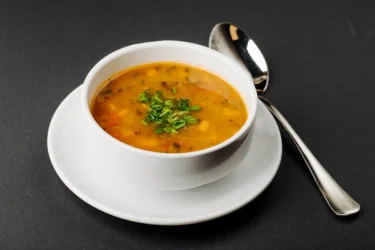
Yes, your granny was right! Chicken soup or broth or Rasam (if you are a vegetarian) are excellent foods to eat when you have the flu. The steam and the herbs from soup or broth speed up the movement of mucus through the nose to relieve congestion. A healthy soup also helps reduce inflammation. Sipping hot soup can support your immune system, which plays a key role in defending the body against bacteria and viruses. If you don’t eat chicken, you can have vegetable soups flavoured with ginger, garlic, turmeric, and black pepper.

Vegetables are rich in antioxidants that help strengthen your immune system. Fresh vegetable juice can help speed up your recovery from illnesses like the flu. When you are down with flu, and your sense of taste is affected and you do not feel like eating solid foods, a glass of vegetable juice can be the perfect nourishing option for you. You can add vegetables like carrots and kale, known for their antiviral properties, to your juice. For maximum benefit, always prepare fresh juice.

Cough and cold take a toll on your immune system and make you weak. Even if you lose your appetite while sick, the right nutrition can help you spring back to normal health sooner. A turkey sandwich will provide you with the essential protein building blocks that your immune system needs to fight the flu. In India, Turkey could be replaced with any lean meat like chicken and vegetables.

Chicken stew is a comfort food that you can rely on when you have a sore throat, a bad cough or flu. The combination of ingredients that go into chicken stew (vegetables, chicken broth, salt, pepper, onion and garlic) can soothe your symptoms and support early recovery.
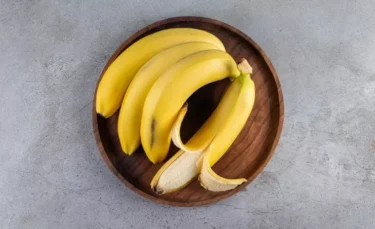
Bananas are nutrient-rich, easy-to-digest fruits that contain fast-acting carbohydrates and soluble fibre. When you have cough, cold or other problems like nausea or vomiting, bananas help in early recovery. Bananas are a part of the BRAT (Banana, Rice, Applesauce and Toast) diet, which is recommended for people with cough, cold and stomach ailments.
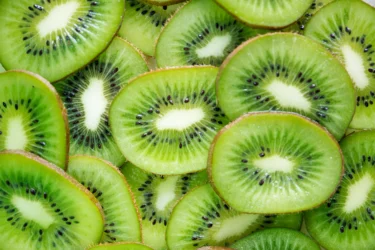
Kiwi may sound like an unusual remedy, but is one of the best foods to ease your cough9. Adults who eat kiwi when they have cold and flu symptoms may show quicker recovery in their sore throat. The micronutrients in kiwi enhance the concentration of red blood cells, which may give you a quick immunity boost.
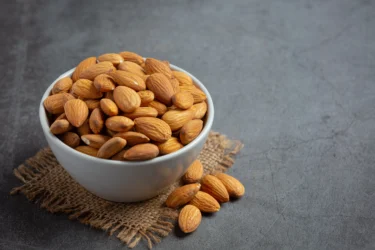
Almonds may benefit when it comes to cold and cough. Almonds skin contains polyphenols, a compound that helps to increase the disease-fighting activity of white blood cells against viruses10. Even after the almonds have been digested, this immunity boost lingers for quite some time. However, the same benefit is not seen if almonds are eaten without the skin.
| Tips | How it helps |
| Clean your nose | Blowing your nose gently (with a clean cloth) as well as using a saltwater rinse can effectively remove the phlegm building up in your nasal passages. |
| Gargle | Gargling with warm water can help clear your throat, reduce mucus as well as ease throat discomfort. Drinking warm beverages can also ease your throat pain. |
| Diet | Following the dietary recommendations given above can boost your overall health and support your immune system. |
| Steam | Steam inhalation or even simply taking a steamy shower can open up your blocked nasal passages, ease your breathing, and help you relax. |
Although your cough or cold may feel overwhelming, a healthy diet can make a big difference by boosting your immunity and keeping you healthy.
Based on my observation, neem leaf might be a natural superhero for cold and fever! It might help boost your immune system, fight inflammation, and may have antibacterial and antiviral powers. Brew some neem leaf tea or try a neem leaf supplement and ensure good health14.
Dr. Smita Barode, B.A.M.S, M.S.
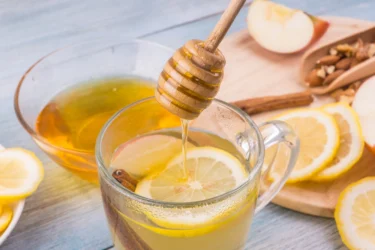
A warm drink made with honey and lemon can help soothe a sore throat and ease cough symptoms naturally. Honey coats the throat, eases irritation and reduces coughing. Lemon, which is rich in vitamin C, supports your immune system and helps fight cold symptoms.
Ingredients:
Instructions:
Mix the honey and lemon juice in warm water until well combined. Sip this soothing drink to help relieve cough and soothe the throat.
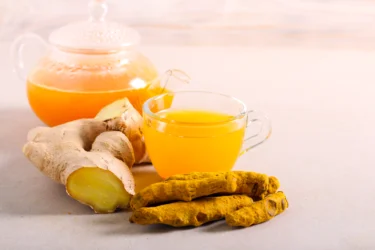
This tea combines two powerful immune-boosting ingredients, ginger and turmeric. Ginger, with its anti-inflammatory properties, can help soothe the throat and reduce coughing. Turmeric contains curcumin, a compound known for its immune-supportive and anti-inflammatory effects, which can aid in managing cold symptoms.
Ingredients:
Instructions:
Boil water in a saucepan and add grated ginger and turmeric powder. Simmer for 5 minutes. Strain the tea into a cup. Add honey if desired and stir well. Enjoy this immune-boosting tea to ease cough and cold symptoms. But always remember to not overdo this drink, as it may be too heat-inducing for some individuals.
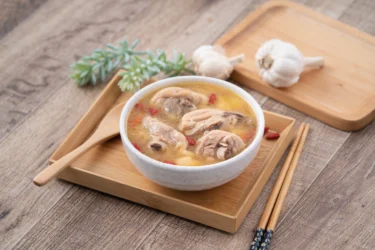
Garlic is well-known for its antibacterial and antiviral properties, which can help fight off infections that cause cough and cold. Garlic chicken soup combines the immune-boosting properties of both garlic and chicken soup, offering hydration, warmth, and nourishment from the vegetables and chicken, while providing comfort and supporting immune function during illness.
Ingredients:
Instructions:
Warm some olive oil in a pan over medium heat, then sauté minced garlic, chopped onions, carrots, and celery. Sauté until vegetables are tender. Add chicken broth and bring to a boil. Reduce heat and simmer for 15-20 minutes. Add cooked chicken and season with salt and pepper. Cook for an additional 5 minutes. Enjoy this comforting and nourishing soup for its soothing effects on cough and cold symptoms.
Also Read: 11 Incredible Health Benefits of Coconut Water
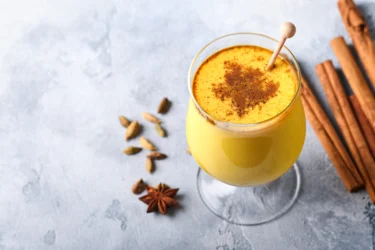
Golden milk combines the benefits of turmeric with warm milk. Curcumin, the main compound in turmeric, has inflammation-reducing properties that may ease irritated airways and suppress cough. Warm milk provides comfort and hydration, helping to alleviate cold symptoms.
Ingredients:
Instructions:
Heat milk in a saucepan over medium heat. Add turmeric, cinnamon and ginger powder. Whisk well to combine. Heat until warm but not boiling. Add honey if desired and stir until dissolved. Golden milk is known for its anti-inflammatory properties and can help relieve cough and cold symptoms.
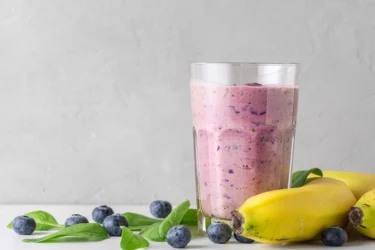
This vitamin-rich smoothie combines the goodness of ripe banana and mixed berries. . Bananas are rich in vitamin C, B6, and potassium, which help support a healthy immune system. Berries, such as strawberries and blueberries, are antioxidant-rich fruits with high vitamin C content that may ease coughing and strengthen your immune system.
Ingredients:
Instructions:
Blend all the ingredients together until smooth. You can add a few ice cubes if you’d like it chilled. This nutrient-rich smoothie supports your immune health during colds and cough.
Also Read: What is Influenza (Flu) & Its Types
Incorporating the right foods into your diet can significantly help alleviate the symptoms of cough and cold. Nutrient-rich options like honey, lemon, garlic, and ginger support immune function, soothe the throat, and reduce inflammation. Along with proper rest and hydration, these foods can help speed up your recovery. Maintaining a healthy diet during illness can ensure a quicker return to better health and comfort.
Also Read: Food for Dengue – What To Eat And What To Avoid!
No. Coughs associated with the common cold and flu are usually not contagious. However, whooping cough (pertussis) is a contagious bacterial infection that spreads through sneezing or coughing. An infected person can be contagious for about two weeks, although modern medicine and antibiotics can help reduce this period significantly.
When experiencing a cough and cold, following these personal hygiene tips will help you recover faster and reduce the risk of spreading the infection to your loved ones:
-Always cover your nose and mouth with a tissue or handkerchief when coughing or sneezing. Using a tissue is always preferable as it is easily disposable.
-Dispose of used tissues in the trash can.
-Before handling food or any surfaces in the house, wash your hands with soap and water.
The use of masks in public spaces or any social gatherings is also recommended to control the spread of infection.
Certain foods can worsen your symptoms during a cough and cold. It’s best to avoid the following foods:
Sugar: Whether in your tea, coffee, chocolates, sweets, or pastries, sugar should be avoided as it can suppress the immune system, making it harder for your body to fight off infections.
Alcohol: While some might recommend a bit of gin and tonic for relief, alcohol actually weakens the white blood cells and increases inflammation in the bronchial and lung tissues. It can also dehydrate you, which is the opposite of what you need when you’re sick.
Caffeinated Drinks: Beverages like tea, coffee, or other caffeinated drinks act as diuretics, causing your body to lose water and salts. This can lead to dehydration, making you feel worse.
Spicy food: Although spicy foods may temporarily thin out the mucus, they contain capsaicin, which can actually increase phlegm production in the long run, potentially delaying recovery.
Milk: Drinking milk can thicken the mucus and increase phlegm production, making your symptoms worse. However, a small cup of hot turmeric (haldi) milk may help some individuals due to the anti-inflammatory properties of turmeric.
Cold temperatures alone don’t cause the common cold. However, they may contribute to the spread of respiratory viruses as people tend to spend more time indoors in close proximity to each other during colder months.
Most colds can be managed at home, but you should seek medical attention if you experience severe symptoms, such as high fever, persistent or worsening cough, difficulty breathing, chest pain, or if your cold symptoms last longer than expected.
A persistent cough after a cold is commonly caused by postnasal drip, which occurs when excess mucus from the nose and sinuses drips down the throat. This can irritate the throat and lead to a lingering cough.
The duration of a common cold can vary, but most symptoms typically last for about 7 to 10 days. However, some symptoms, like cough, may persist for a few weeks.
No, antibiotics are not effective against viral infections like the common cold. Colds are triggered by viruses, and since antibiotics target bacteria, they aren’t effective for viral infections. Misusing antibiotics may also lead to resistance. Taking antibiotics unnecessarily can contribute to antibiotic resistance and should be avoided.
Disclaimer: The information provided here is for educational/awareness purposes only and is not intended to be a substitute for medical treatment by a healthcare professional and should not be relied upon to diagnose or treat any medical condition. The reader should consult a registered medical practitioner to determine the appropriateness of the information and before consuming any medication. PharmEasy does not provide any guarantee or warranty (express or implied) regarding the accuracy, adequacy, completeness, legality, reliability or usefulness of the information; and disclaims any liability arising thereof.
We often focus on our diet to achieve glowing skin or boost immunity, but how often do we consider the health of our liver? It is time to shift our attention to this organ. Good nutrition plays a vital role in maintaining healthy liver function and supporting its essential tasks in the body.
The liver is the powerhouse and the primary filter of our body. When you eat food, it is broken down in the stomach and intestine by various enzymes, proteins, and bile which is produced by the liver. Additionally, the liver acts as a storehouse for vitamins, minerals, and carbohydrates. Below are some important functions of the liver:
To support optimal liver function, consider the following practices:
The liver is the only organ in the body that has the ability to detoxify itself. It plays a crucial role in processing everything we consume. To support the liver’s natural cleansing functions, it is important to maintain a balanced, liver-friendly diet. Below are some foods that may help support the liver’s detoxification process.
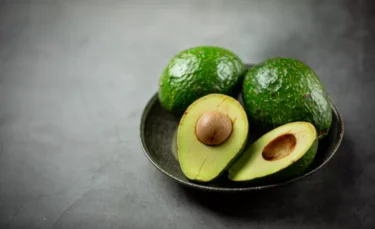
Avocado is often regarded as a modern-day superfood. It contains different vitamins and minerals which may support liver health. Avocados are also a source of glutathione, an antioxidant that may help the body neutralise and eliminate harmful substances1.

Garlic contains certain compounds that activate liver enzymes which may support the activation of liver enzymes involved in the body’s detoxification processes. It is also a source of selenium, a mineral that may help protect liver cells from damage1.
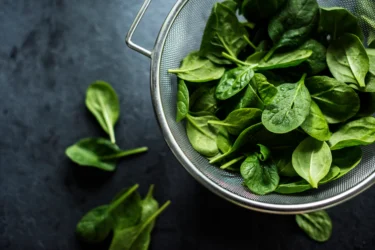
Green leafy vegetables, such as spinach and kale, are rich in vitamins A, C, and K, as well as antioxidants. Including them in the diet may support overall health and contribute to maintaining a healthy internal environment2.

Turmeric is widely regarded as a powerful spice in traditional practices. It may help support liver health by protecting liver cells and encouraging the body’s natural detoxification processes. Turmeric is also believed to help in the natural production of bile and may help in managing fat accumulation in the liver. However, further studies are needed to establish these effects in humans3.
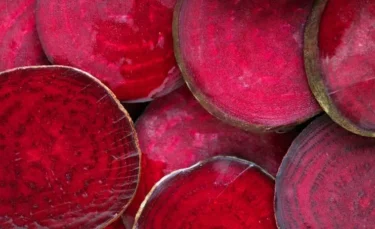
Beetroot juice contains nitrates and acts as a source of antioxidants, which may upport heart health and reduce inflammation. Clinical studies4 also suggest that a chemical found in beetroot can help fight against fatty liver disease.
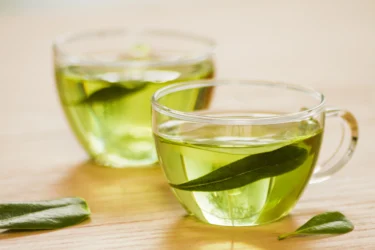
Green tea is full of antioxidants known as catechins. Catechin helps with liver detoxification and reduces inflammation of the liver2.
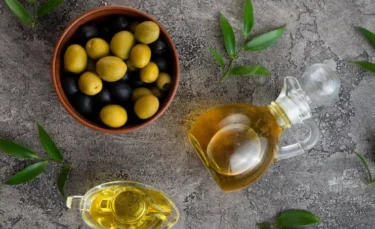
Olive oil and its extract can be beneficial in liver health2. Some studies5 show that its has a powerful antioxidant that protects the liver from different toxins.

Nuts are rich in nutrients, vitamins, fats, and antioxidants, and may support overall health when included in a balanced diet. Walnuts, in particular, contain an amino acid called arginine, which may assist the body in its natural detoxification processes. They are also known to be high in plant compounds. Traditionally, black walnuts have been valued for their potential to support circulation and may contribute to maintaining liver health. However, more research is needed to establish these effects in humans6.

Fatty fish is a rich source of omega-3 fatty acids which helps to reduce liver inflammation. These healthy fats are believed to assist in reducing inflammation and may help regulate fat levels in the liver. Additionally, they may contribute to maintaining normal liver enzyme function. However, further research is required to confirm these effects in human health6.
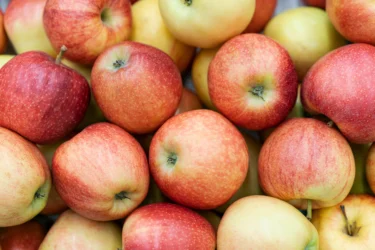
Adding fibre-rich fruits like apples to your diet may help to remove toxins from the body. It also supports digestion8.
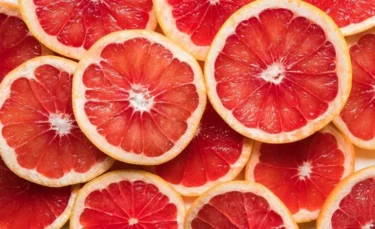
Study2 results suggest that grapefruits and its products are rich in antioxidants which may help in reducing inflammation and prevent liver injury.
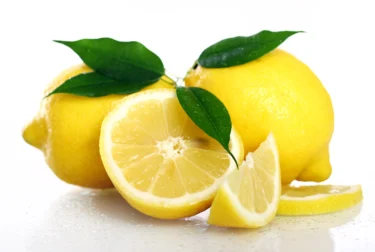
Studies7 suggest that a glass of warm water with lemon juice may work as a liver detoxifier.
According to Ayurvedic literature, Pippali is believed to be a medicinal plant with potential hepatoprotective properties, which may support liver health and assist in the management of various liver conditions.
Dr. Siddharth Gupta, B.A.M.S M.D (Ayu)
Also Read: Signs You May Have Liver Stress
The following herbs may be effective in cleansing your liver:
Also Read: Natural Home Remedies for Fatty Liver
As a vital organ, the liver plays an essential role in supporting various functions within the body. Maintaining liver health through a balanced diet and healthy lifestyle choices, such as limiting alcohol intake and avoiding smoking, may contribute to its optimal functioning.
Certain foods and beverages, when included as part of a balanced diet, may support the liver’s natural detoxification processes and promote overall well-being. While these dietary choices may assist in maintaining liver health, it is important to consult a healthcare professional before making any significant changes to your diet or lifestyle, especially if you have existing health concerns2,10.
Also Read: Everything You Need to Know About the Hepatitis A Vaccine
Disclaimer: The information provided here is for educational/awareness purposes only and is not intended to be a substitute for medical treatment by a healthcare professional and should not be relied upon to diagnose or treat any medical condition. The reader should consult a registered medical practitioner to determine the appropriateness of the information and before consuming any medication. PharmEasy does not provide any guarantee or warranty (express or implied) regarding the accuracy, adequacy, completeness, legality, reliability or usefulness of the information; and disclaims any liability arising thereof.
The liver is one of the most hardworking but undervalued organs in the body. While much attention is given to heart health, weight loss, and glowing skin, it is the liver that performs approximately hundreds of essential functions. These include storing nutrients like sugar, minerals, and vitamins to fuel the body; controlling the production and excretion of cholesterol; producing bile, which is stored in the gallbladder and helps break down fats1; and filtering out harmful substances, such as alcohol, medicines, and environmental factors2.
Just like the heart, the liver can also be stressed; however, unlike heart problems that may show early signs, the symptoms of a distressed liver show up very late. The liver is stressed when it is overworked and becomes sluggish.
So, how do you understand if the liver is in distress? Here are 17 symptoms that may indicate your liver is under stress:
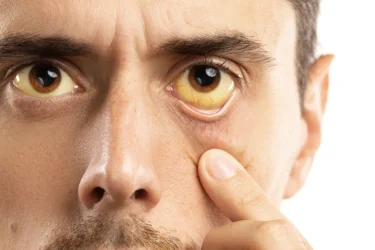
Skin discolouration may sometimes be linked to liver problems. If your skin colour changes to jaundice yellow or pale with a blue tinge, your nails or fingertips turn yellow, or you have yellowing of the eyes, it is advisable to visit a doctor. This change in colour occurs because the body is unable to flush out the toxins, which leads to bilirubin accumulating under the skin, causing skin discolouration3.

Feel bloated frequently and have constipation too? Frequent indigestion may be associated with liver issues. With bloating, you may experience stomach pain as well4. This happens because the bile is unable to break down the food during digestion.
Another important sign is Spider naevi. Spider naevi or angiomas are small clusters of blood vessels that form just beneath the skin, often spreading outward like a spider’s legs. Angiomas typically appear red or purple in colour. These are often present in excessive numbers in people with liver disease.
Dr. M.G. Kartheeka, MBBS, MD (Pediatrics)

The liver plays an essential role in filtering blood and supports the synthesis of many nutrients needed for good health. However, when the liver is stressed, it may affect the synthesis and delivery of nutrients to muscles, tissues and tendons. This may lead to symptoms such as muscle cramps, weakness, and fatigue5.

Do you feel tired all the time? Persistent fatigue may occur when the liver isn’t functioning efficiently. When the body is under continuous strain, it may place additional pressure on the liver and other organs, leading to persistent tiredness. It is best to get your liver checked at this point5.

Is your urine darker than usual? It is possible that this may be due to inadequate water intake, which may cause your stools to be darker too. If you start drinking enough water and the colour of your urine and stool lightens, all may be well. However, if your urine and stool colour are still dark, you should seek medical help as this may be caused by liver problems5.
The culture of fast foods these days is slowly damaging the liver due to non-alcoholic fatty liver disease. Avoiding refined sugar and fast foods and eating before dusk helps a lot in prevention of fat accumulation in the liver, which can allay liver stress symptoms (by promoting weight loss).
Dr. Nikhil Yadav, MBBS MD, CCEBDM

When the liver is stressed, some individuals may experience mood changes or emotional disturbances, such as irritability, anxiety, mood swings, and depression, and some may even experience cognitive impairment, meaning their memory, attention span, and decision-making may be affected6.

Another potential liver distress symptom is little-to-no interest in food. A reduced desire to eat is often caused by an underlying health issue and should be taken seriously5.

Although irregular sleep pattern is a common occurrence amongst millennials due to a stressed lifestyle, a study7 found that liver cirrhosis was responsible for unusual sleep patterns in many patients.

When you have liver problems, the liver may not be able to purify your blood adequately. When toxins are not removed from the blood, it may lead to symptoms like memory loss, difficulty thinking, and confusion5.

Abnormal skin itchiness may be a symptom of liver cirrhosis3.

Liver disease tends to develop over time, slowly replacing healthy liver tissue with scarred or damaged tissue. This affects liver function and changes the metabolism, hormonal balance, and many other factors, which may lead to weight gain8.

Experts believe that when you develop nonalcoholic fatty liver disease (liver disease not associated with alcohol), your palms start to turn reddish, an outward indicator of liver dysfunction3.

Another probable symptom of nonalcoholic fatty liver disease is the enlargement of breasts in men. Although the exact cause of this is unclear, it is speculated that this may occur due to excess production of the female hormone, oestrogen, in this condition9.

Liver damage also manifests in the form of easy and sudden skin bruises and even bleeding5.
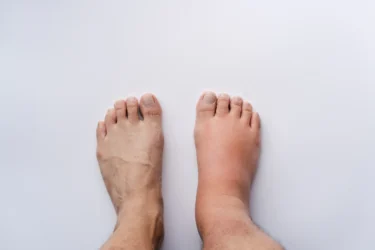
Swelling in the ankles and feet may also be associated with liver dysfunction. There may also be abdominal swelling due to the accumulation of fluid in the abdomen5.
Liver function tests are commonly recommended blood tests for measuring different enzymes, proteins and other substances made by the liver. Changes noticed in liver function tests should be reviewed by a physician to find the cause and manage the condition.
Dr. Ashish Bajaj, M.B.B.S., M.D., in Clinical Pharmacology and Toxicology
Also Read: Liver Fibrosis: What Is It, Causes, Symptoms & Treatment

Experiencing chills is often a natural response of the body when the mercury drops or when you are developing a fever. However, if none of this fits the bill, it could indicate cholestasis (blocked or reduced bile flow) associated with liver disease10.

When the liver is under stress, it can disrupt many bodily functions and may be associated with symptoms such as ringing in the ears, sleep disturbances, dizziness, blurry vision, allergic reactions, gastrointestinal bleeding, reduced sex drive, unexplained weight changes, sensitivity to chemicals, and the appearance of spider veins11,5.
Also Read: Natural Home Remedies for Fatty Liver
A healthy liver is important for overall well-being, as it supports many essential functions like the storage of nutrients, digestion, and filtering blood. If you are experiencing any of these symptoms mentioned in this article, it is advisable to consult your doctor or a liver specialist today to identify the cause of your symptoms and support the timely management of liver issues.
Also Read: What is Hepatitis A? Causes, Symptoms, and How It Spreads
Disclaimer: The information provided here is for educational/awareness purposes only and is not intended to be a substitute for medical treatment by a healthcare professional and should not be relied upon to diagnose or treat any medical condition. The reader should consult a registered medical practitioner to determine the appropriateness of the information and before consuming any medication. PharmEasy does not provide any guarantee or warranty (express or implied) regarding the accuracy, adequacy, completeness, legality, reliability or usefulness of the information; and disclaims any liability arising thereof.
Next Page »« Previous Page